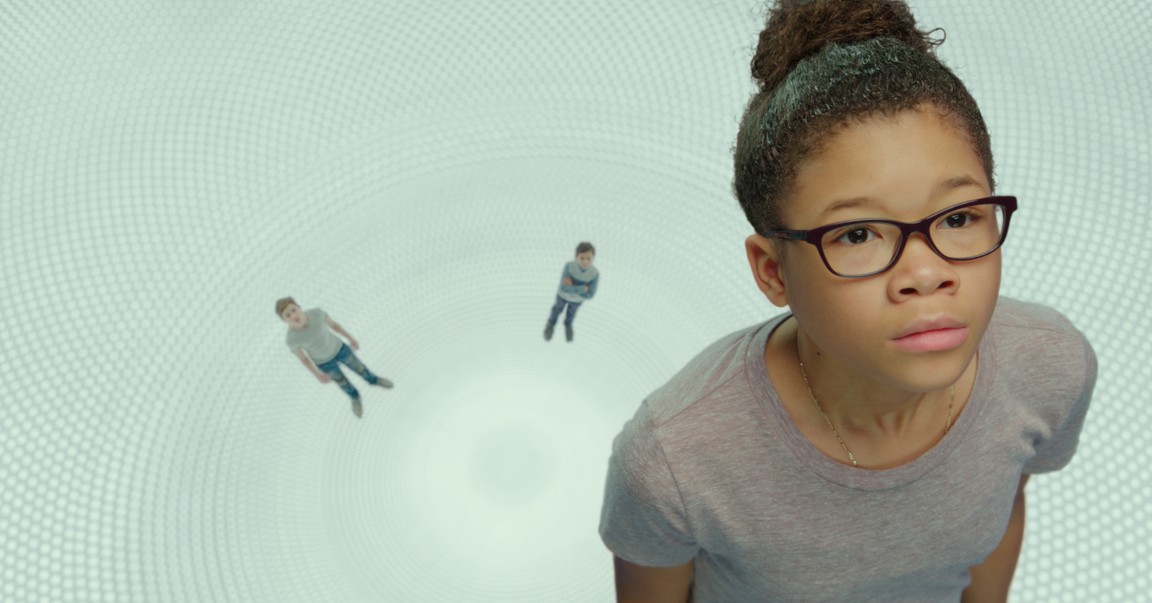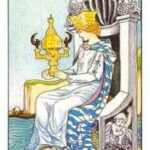
Living in a Culture That’s Lost Its Heart
“To learn how to fully live Eros makes a major contribution to the world around me, because this is a culture that’s lost its heart;
 By the 1970’s, Madeleine L’Engle’s A Wrinkle in Time (1962) was a staple in youth literature throughout North America. As an adult in 1977, I fell in love with it while doing research for the Children’s Literature course I taught. Considering that it was published in the pre-internet/social media era, this modern fantasy was arguably as popular with young readers in the 1970’s and 80’s as J.K. Rowlings’ Harry Potter series was with millennial youth. In 2003 Disney turned it into an award-winning made-for-television film, and now, 56 years after its inception, a new version of this classic has at last arrived on the big screen. I couldn’t wait to see it, and did last weekend.
By the 1970’s, Madeleine L’Engle’s A Wrinkle in Time (1962) was a staple in youth literature throughout North America. As an adult in 1977, I fell in love with it while doing research for the Children’s Literature course I taught. Considering that it was published in the pre-internet/social media era, this modern fantasy was arguably as popular with young readers in the 1970’s and 80’s as J.K. Rowlings’ Harry Potter series was with millennial youth. In 2003 Disney turned it into an award-winning made-for-television film, and now, 56 years after its inception, a new version of this classic has at last arrived on the big screen. I couldn’t wait to see it, and did last weekend. The story takes off when Charles Wallace introduces Meg and her new friend Calvin O’Keefe (Levi Miller) to his strange new friends—Mrs. Whatsit (Reese Witherspoon), Mrs. Who (Mindy Kaling) and Mrs. Which (Oprah Winfrey). Like the benevolent Mother Goddesses they symbolize, these beings have come to Earth from somewhere in the cosmos to help Meg and Charles Wallace rescue their father from imprisonment by the evil shadow known as IT. Traveling across a wrinkle in time and space called a tesseract—a new theory being developed by Meg’s mother (Gugu Mbatha-Raw) but as yet unproven by her—they are transported to the dark planet Camazotz where they rescue Dr. Murray but lose Charles Wallace to the evil. The timeless message of this story is conveyed by the way Meg saves him from the gathering darkness.
The story takes off when Charles Wallace introduces Meg and her new friend Calvin O’Keefe (Levi Miller) to his strange new friends—Mrs. Whatsit (Reese Witherspoon), Mrs. Who (Mindy Kaling) and Mrs. Which (Oprah Winfrey). Like the benevolent Mother Goddesses they symbolize, these beings have come to Earth from somewhere in the cosmos to help Meg and Charles Wallace rescue their father from imprisonment by the evil shadow known as IT. Traveling across a wrinkle in time and space called a tesseract—a new theory being developed by Meg’s mother (Gugu Mbatha-Raw) but as yet unproven by her—they are transported to the dark planet Camazotz where they rescue Dr. Murray but lose Charles Wallace to the evil. The timeless message of this story is conveyed by the way Meg saves him from the gathering darkness. Madeleine L’Engle described Mrs. Whatsit as a frumpy, bumbling and eccentric old woman (who morphed into a young and beautiful white winged creature that was part horse and part manta ray), Mrs. Who as a plump little woman in enormous spectacles, and Mrs. Which as a coldly authoritative black-robed, beaked-nose witch with a broomstick who had difficulty materializing into human form. In the film version none of them is remotely old or witchy. Mrs. Whatsis is a gorgeous young redhead and Mrs. Who an exotic, raven-haired beauty. And the majestic Mrs. Which is a stunning Queen of the Cosmos with a glass-beaded unibrow, glittering eye shadow and lipstick, a shimmering, constantly changing wardrobe, and impossibly thick blonde-white hair….. I quite envied her hair…..
Madeleine L’Engle described Mrs. Whatsit as a frumpy, bumbling and eccentric old woman (who morphed into a young and beautiful white winged creature that was part horse and part manta ray), Mrs. Who as a plump little woman in enormous spectacles, and Mrs. Which as a coldly authoritative black-robed, beaked-nose witch with a broomstick who had difficulty materializing into human form. In the film version none of them is remotely old or witchy. Mrs. Whatsis is a gorgeous young redhead and Mrs. Who an exotic, raven-haired beauty. And the majestic Mrs. Which is a stunning Queen of the Cosmos with a glass-beaded unibrow, glittering eye shadow and lipstick, a shimmering, constantly changing wardrobe, and impossibly thick blonde-white hair….. I quite envied her hair…..
“To learn how to fully live Eros makes a major contribution to the world around me, because this is a culture that’s lost its heart;
“. . . when our left and right brain work in harmony, we begin to access our deeper Self and feel its guidance and support.

Those of us raised as Christians know this holiday is about a lot more than rushing about, partying and shopping, and many of us enjoy warm memories and nostalgic feelings this time of year. But why are the moments of love, joy and peace so difficult to find during the holiday season? Where do the feelings of exhaustion, anxiety, disappointment and depression come from? Why do we keep missing the point of Christmas? How can we recapture it?


Website design and development by Chad Lieberman
19 Responses
I agree with what you said here. I was also disappointed they didn’t show the connection of the “Love Frequency” being part of how tessering began. It was a spotty plot but beautiful and entertaining for young teens.
Yes, I was disappointed about that too. I thought it was an important part of the story. but I agree that young teens will probably enjoy it. I’m glad for that. Thanks for writing. Jeanie
Sounds like something I must see soon. You’ve inspired me to read the book now Jean! Thanks and best wishes ?
Thanks, Roberta. I think you’ll like it. It’s really much richer than the film, even with the visual beauty. Enjoy. Jeanie
Did don’t know if the book embedded itself in children’s literature over this side of the pond or whether it just passed me by, so you’ve got me hunting it and the rest of the series down….if it’s good enough for Jeanie! ?
I don’t know if it did either, but around the same time, C.S. Lewis’s Chronicles of Narnia became very popular here with young people, and I suspect on your side as well. They were made into films too. Lewis and L’Engle were both very spiritual, and both wanted to convey the deeper, universal meanings of religion without the limiting cultural trappings of organized religion. Seeing and conveying a much bigger picture was their strength, that and their psychological self-awareness. They understood the power of the shadow, the value of seeing and accepting our flaws, etc. and managed to write highly readable books to acquaint children with these difficult concepts. They were really quite progressive for their time in many ways. A sort of advance wave of what came to be called New Age spirituality….. If you do read Wrinkle, I hope you’ll let me know what you think of it. Best, Jeanie
That was a beautiful critique or analysis. I love the way you interpret the films through your knowledge of myth! Thank you. XQ
>
Thanks very much Que. I love this kind of writing…..seeing the psychological meaning beneath the cultural output….I think I’m finding a new niche. 🙂 Jeanie
Reblogged this on lampmagician.
Many thanks, Alaedin.
You are always heartily welcome dear Jean ❤ wonderful read ?
Thank you. You’re very kind. 🙂
You too ??❤
Hi Jeanie, Such a powerful summary you wrote in your final paragraph: ‘Most satisfying of all is the way Meg saves Charles Wallace. By loving him. It’s the same timeless message about how anyone is ever really saved from the world’s darkness. Love is the one power evil doesn’t have, will never have.’ How beautiful. And even with weakness as a film – if that message comes through it would be, as you say, most satisfying! As an aside I once had a job in an elementary school teaching a non-academic arts program. One year I spent a day a week reading A Wrinkle in Time to children in grades 4-6 who, for the most part, had not been read stories at bedtime and owned little visual imagination. But they were captured by this story and transported and their innate imaginations awakened.
How lovely to hear from you, Steven. Thanks for the kind words. I do hope that message comes through. It’s so simple, yet seems so incredibly difficult for us humans to get right. I love it that you once read A Wrinkle in Time to school children. I’m curious to know what kinds of activities you might have had them engage in to stimulate their imagination. I’ll bet some of those young minds remember you because of that book, and have benefitted from the experience! Thank you for writing.
Thanks Jeanie – I’ve not read Madeleine L’ Engle though I know of her. Despite the physical glamourisation of some of the characters it seems the message of love did come through clearly enough in the film. Re C.S. Lewis, my children as youngsters were entranced with his stories … and I with his adult fiction (‘Till we have Faces’ – a retelling of Amor and Psyche) and non-fiction. Wondrous writings .. Am thinking also of his ‘The Screwtape Letters’ –
I loved his writing too, Susan. He was an amazing pioneer with the way he conveyed sound, universal spiritual truths with his imaginative writing. What a gift he and Madeleine L’Engle both were to the world. We need more writers like them. Thank you for writing, Susan. Blessings from the chilly northern hemisphere!
Jeanie,
You write so well, you should review all films. It might make me want to go see a movie. I definitely want to see this one.
How kind. Thank you, Barb. Do let me know what you think if you see it!